The document provides a comprehensive overview of nonvital tooth bleaching techniques, detailing various methods such as walking bleaching, thermocatalytic, and laser bleaching. It outlines the indications and contraindications for treatment, emphasizing the importance of patient compliance and addressing structural integrity before proceeding with bleaching. Additionally, it discusses the advantages and disadvantages of nonvital bleaching, as well as preliminary treatment steps necessary for successful outcomes.
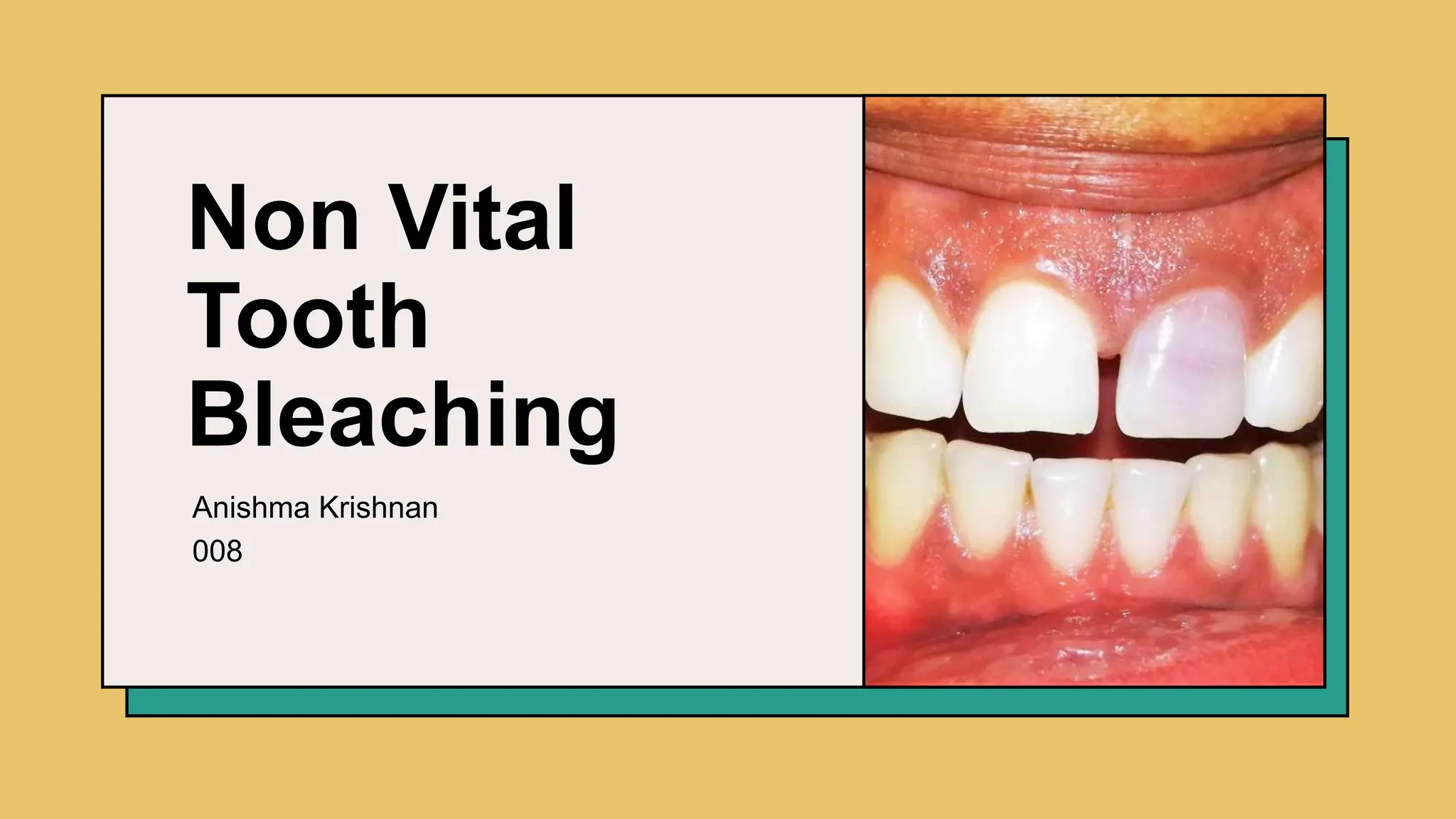


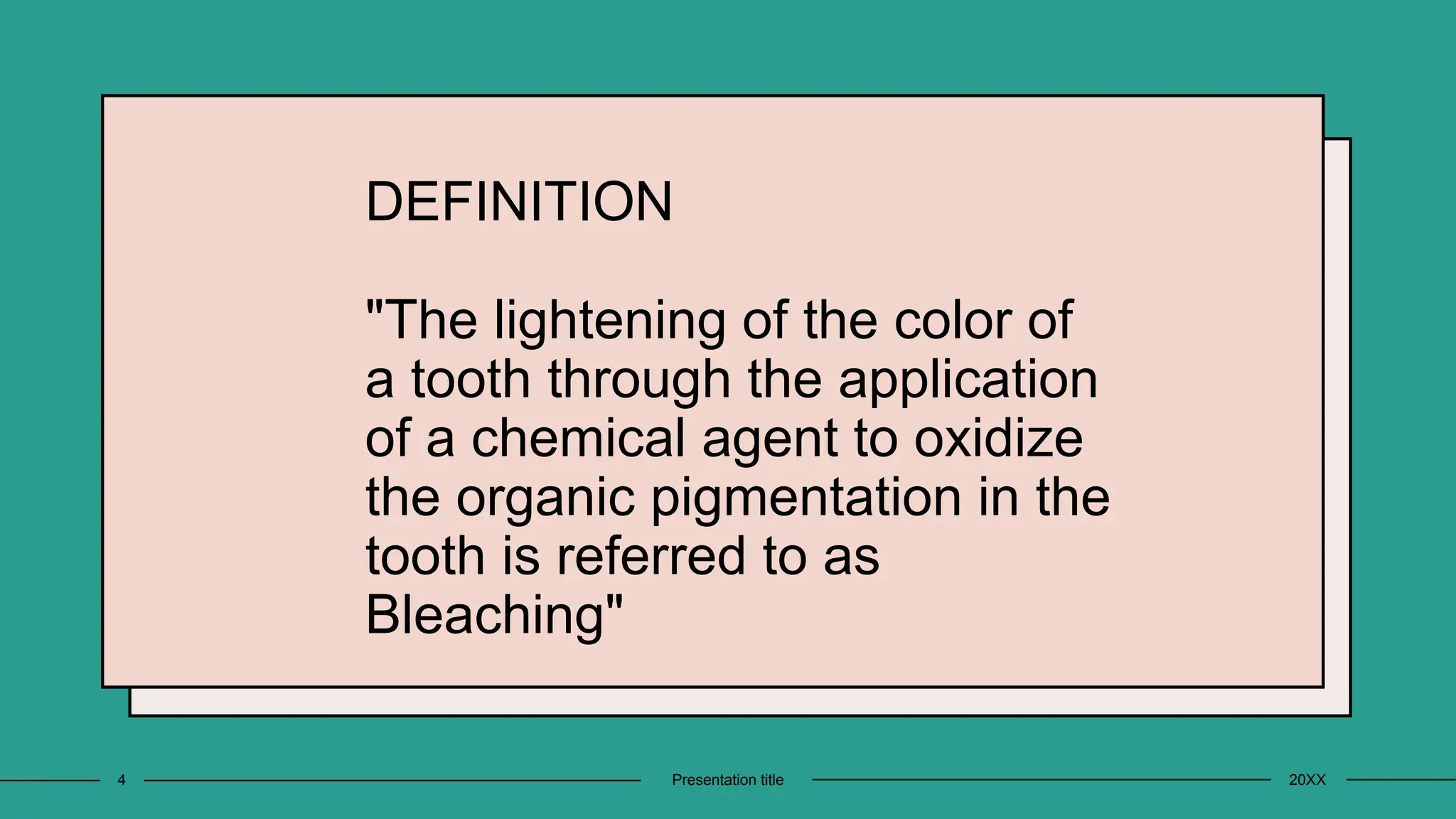
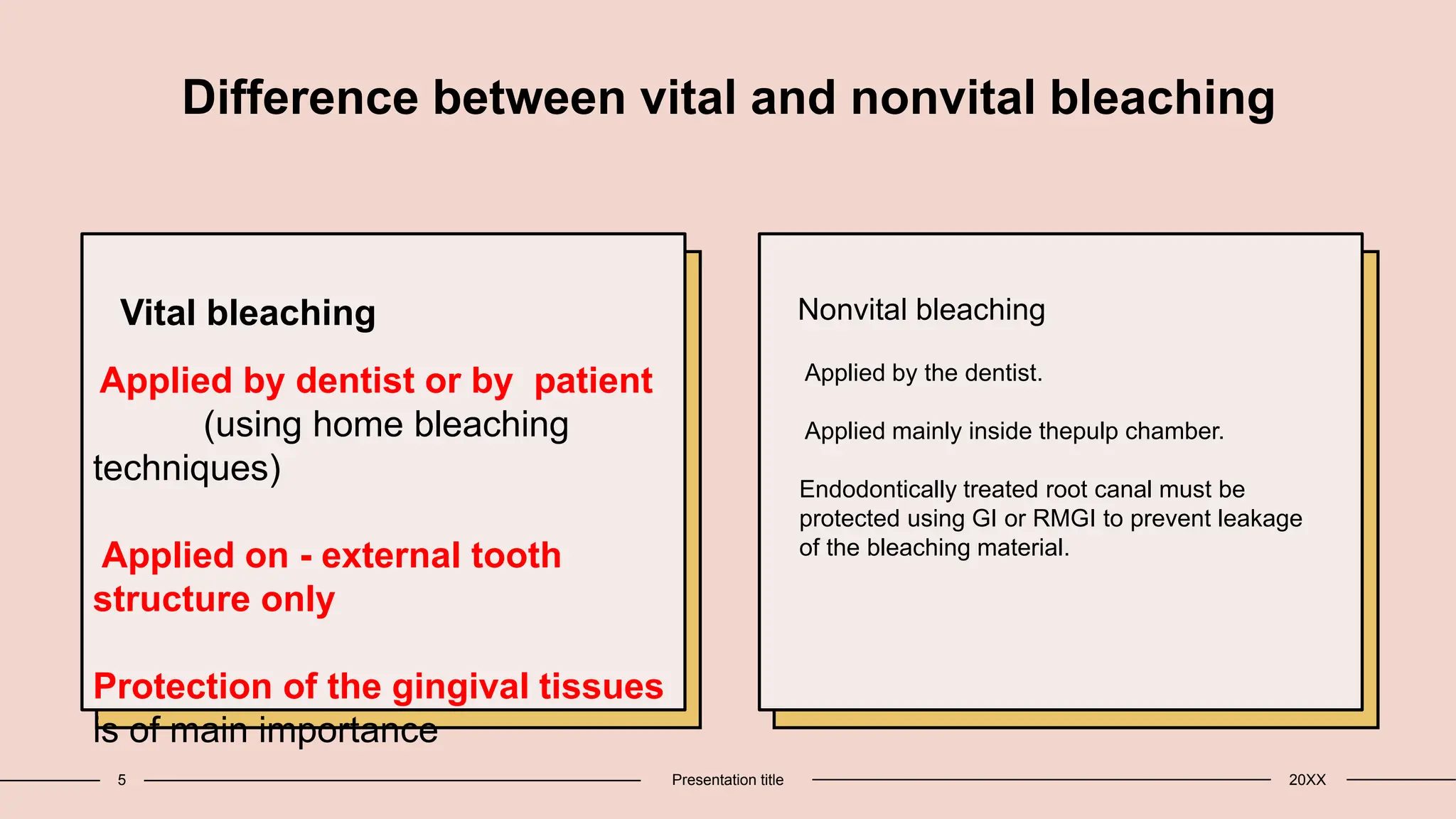

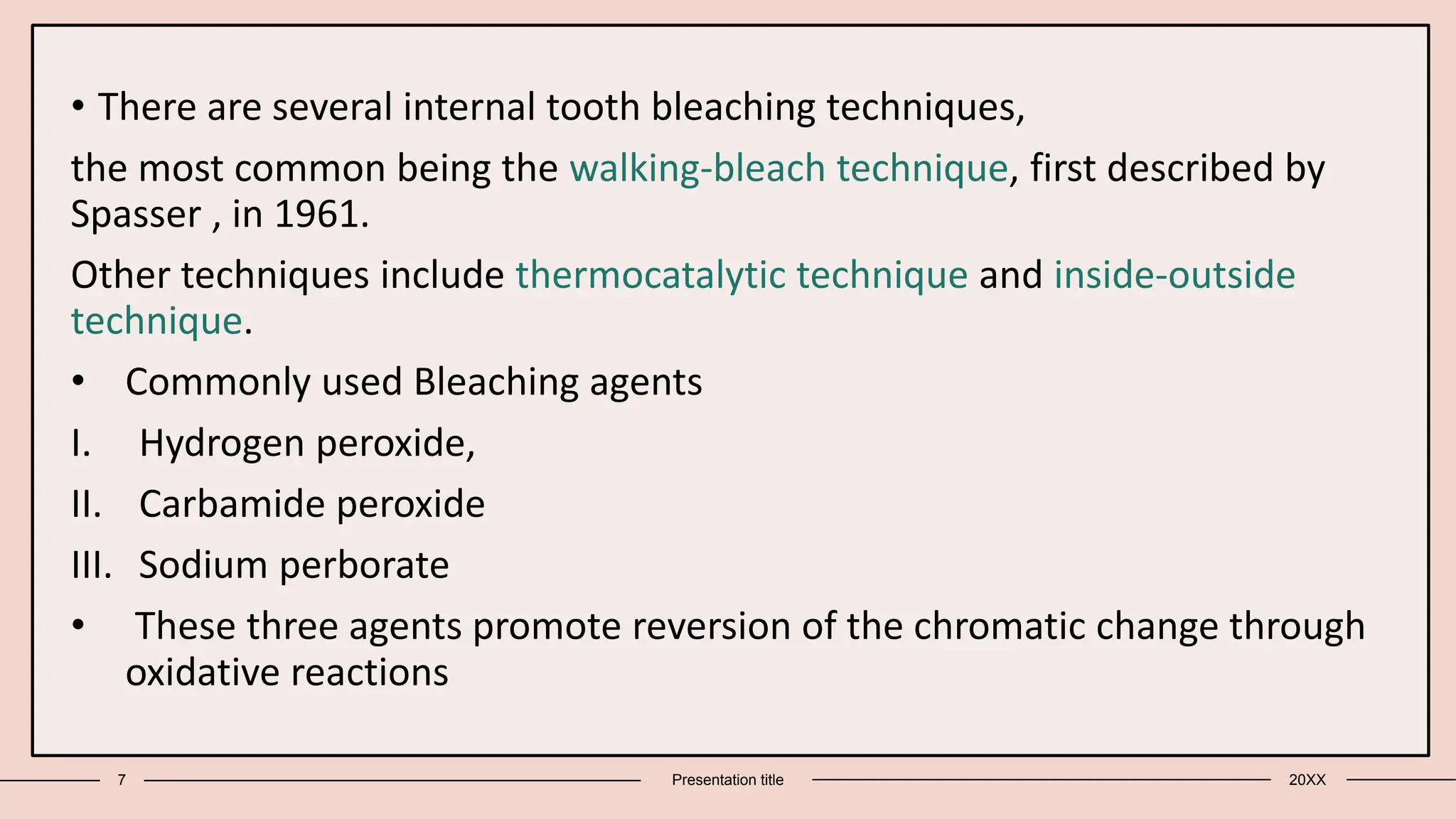
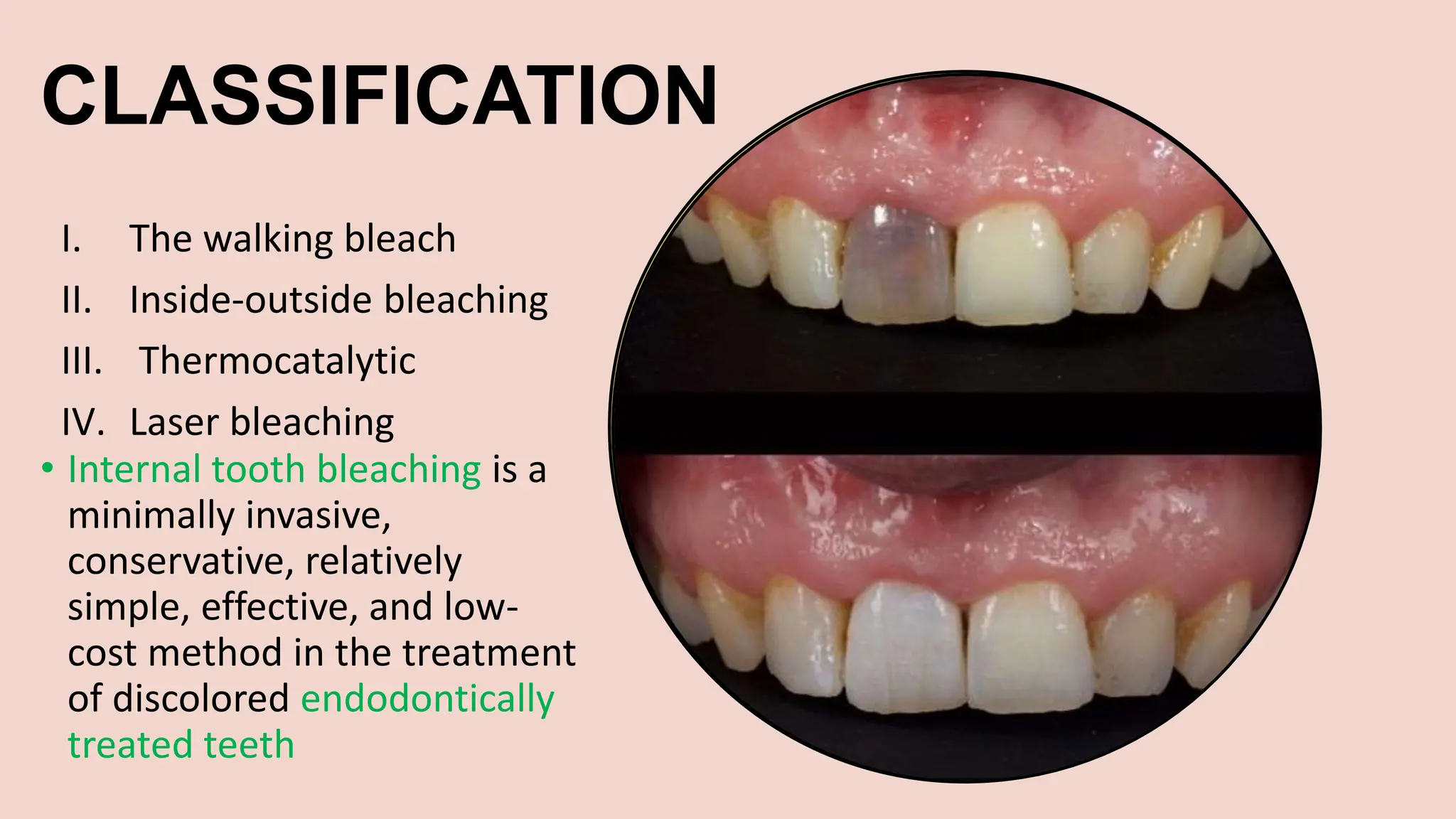













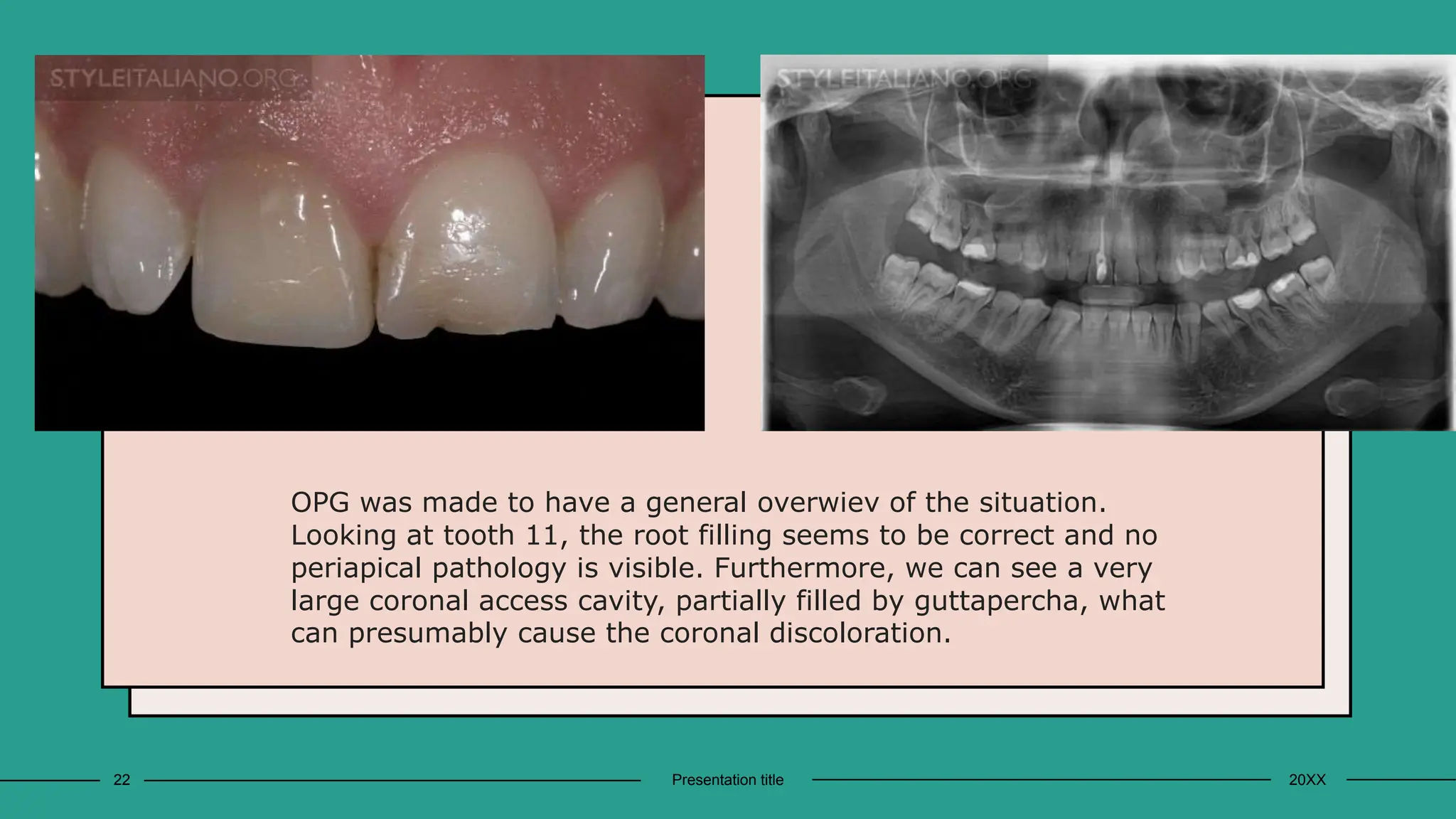










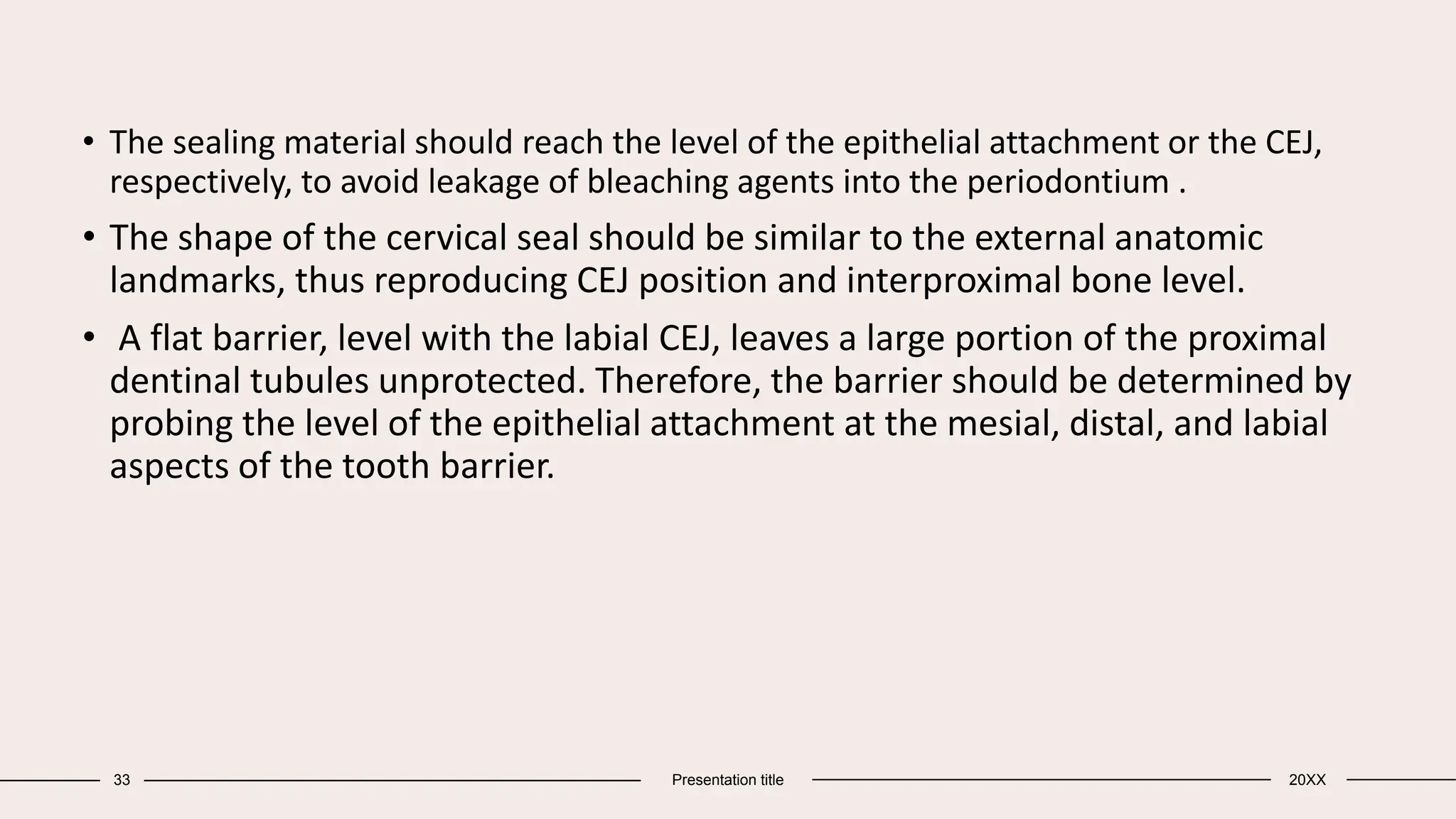















![• Settembrini introduced the inside-outside bleaching technique, in which bleaching
occurs simultaneously with in the tooth structure and on tooth external surface.
• In this technique, generally 10% carbamide peroxide gel applied to tooth structure
internally and externally in root-filled, discolored teeth and refreshed on a regular
basis.
• This bleaching agent (CH4N2O • H2O2) has undergone extensive research.
• An in vitro study showed that carbamide peroxide has a bleaching capacity
comparable to that of hydrogen peroxide [20]. Inside-outside technique is a fast
technique because the oxygen reactive species released from the hydrogen peroxide
freely diffuse inside and outside of the tooth structure to effect tooth whitening.
49 Presentation title 20XX](https://image.slidesharecdn.com/nonvitaltoothbleachingnew-240223045001-581e8174/75/Non-Vital-Tooth-Bleaching-pptx-conservative-and-endodontics-49-2048.jpg)









